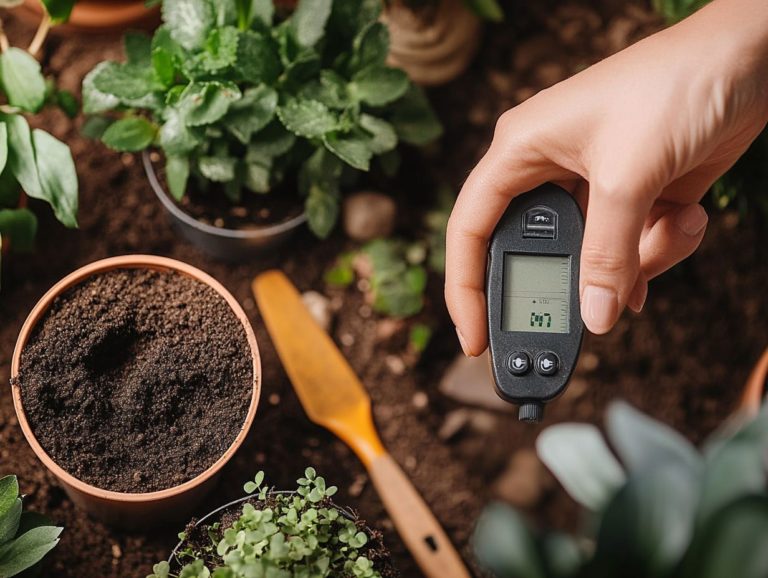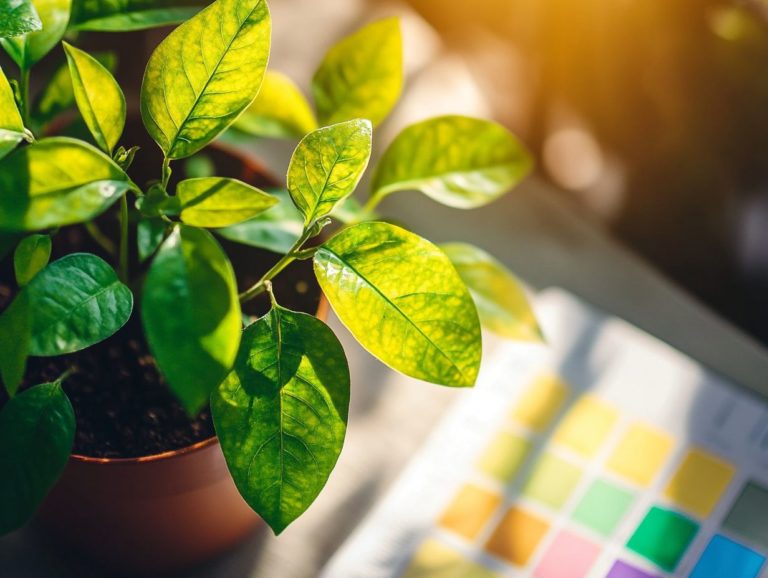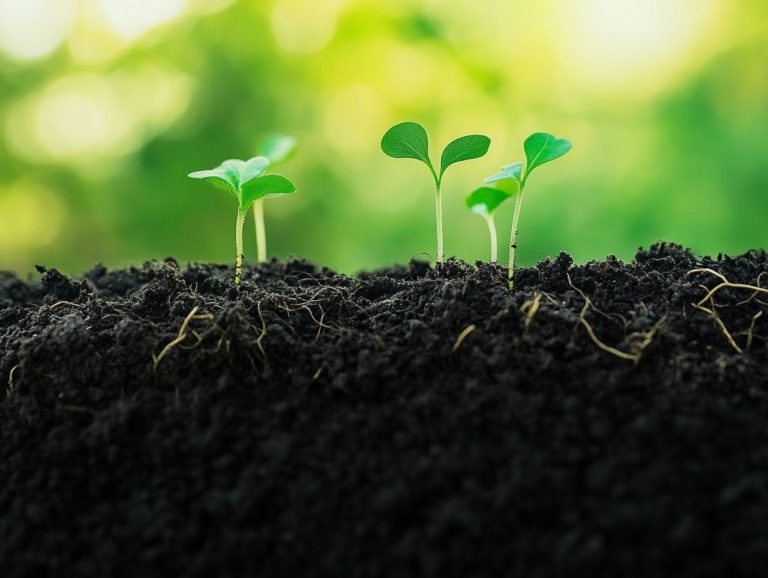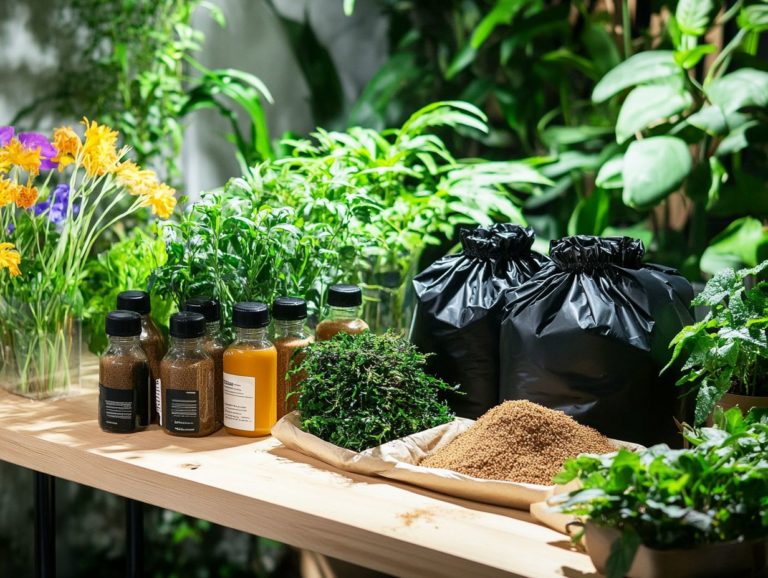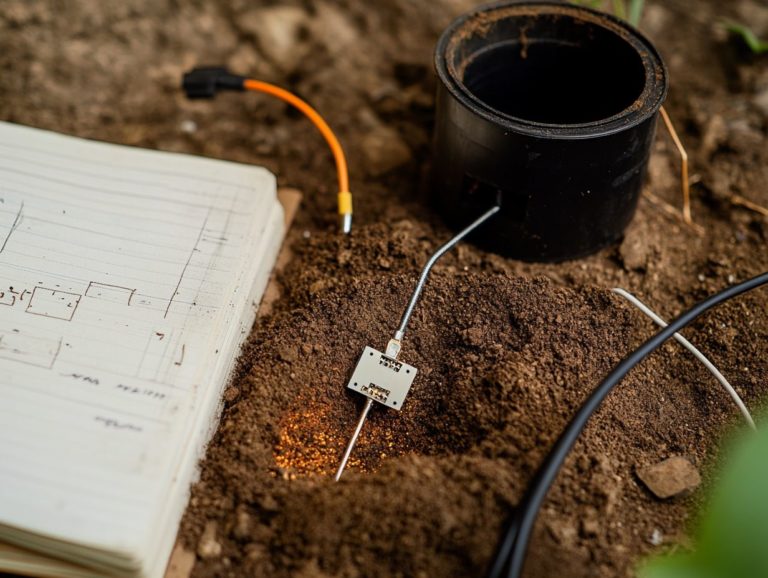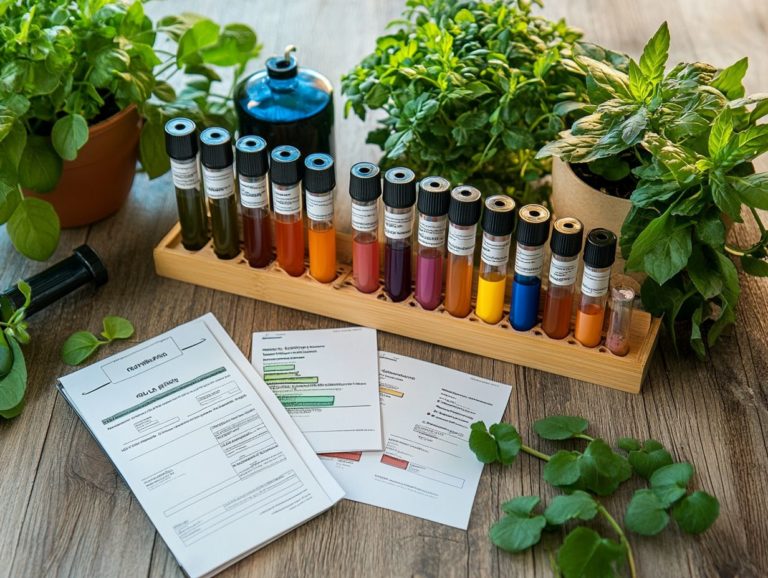DIY Potting Mix Recipes for Indoor Plants
Making your own potting mix opens up a world of benefits! This approach not only allows you to customize the blend for your plants’ unique needs, but it also saves you money and reduces waste. Don t wait! Start creating your custom potting mix today for healthier plants!
In this article, you’ll explore the myriad benefits of homemade potting mixes, along with the essential components you’ll need. You’ll discover an array of recipes designed for various types of plants from succulents to orchids accompanied by insightful tips and common pitfalls to avoid.
Prepare to unlock the full potential of your green thumb!
Contents
- Key Takeaways:
- 1. Benefits of Making Your Own Potting Mix
- 2. Basic Components of a Potting Mix
- 3. Recipe 1: Your Go-To Potting Mix!
- 4. Recipe 2: Succulent and Cactus Mix
- 5. Recipe 3: Tropical Plant Mix
- 6. Recipe 4: Acid-Loving Plant Mix
- 7. Recipe 5: Foliage Plant Mix
- 8. Recipe 6: Seed Starting Mix
- 9. Recipe 7: Orchid Mix
- 10. Recipe 8: African Violet Mix
- 11. Recipe 9: Hanging Basket Mix
- 12. Recipe 10: Terrarium Mix
- What Are Some Tips for Making and Using DIY Potting Mixes?
- Frequently Asked Questions
- What is a DIY potting mix recipe for indoor plants?
- What are the benefits of making your own potting mix for indoor plants using lightweight volcanic materials?
- What are some common ingredients used in DIY potting mix recipes for indoor plants?
- How do I create a DIY potting mix for my specific indoor plant?
- Can I reuse potting mix from old plants in a new DIY mix?
- Are there any specific steps I should follow when making a DIY potting mix for indoor plants to ensure proper soil structure and moisture retention/aeration?
Key Takeaways:
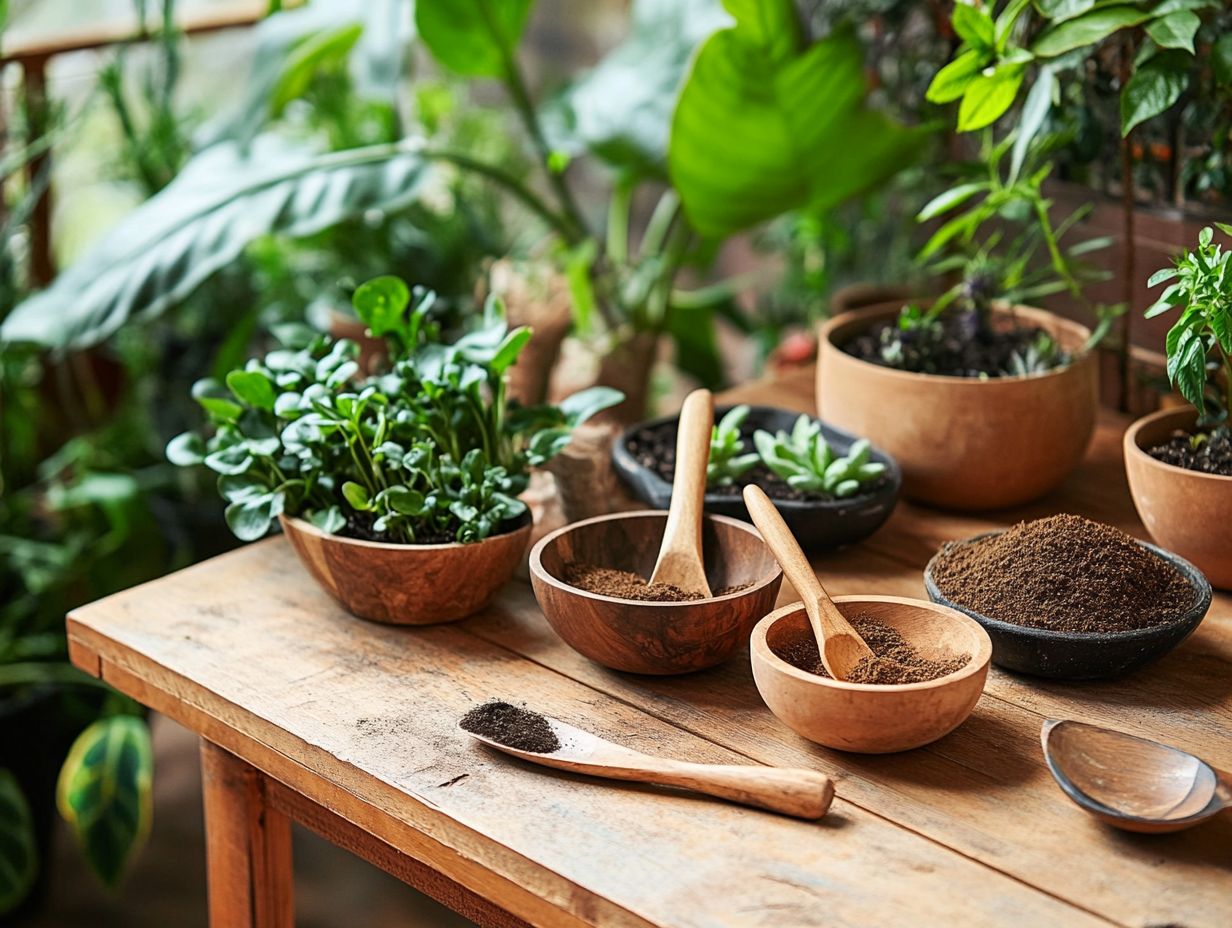
- Making your own homemade potting mix has many benefits, including cost-effectiveness, customization, and control over ingredients.
- A basic potting mix should contain a balance of organic materials, such as peat moss and organic compost, and inorganic materials, such as perlite and vermiculite.
- Recipes for specific plant types ensure that your plants have the right nutrients and drainage for optimal growth.
1. Benefits of Making Your Own Potting Mix
Creating your own potting mix provides numerous advantages. These include enhanced moisture retention and the ability to customize ingredients for your specific plants. This leads to healthier growth and improved gardening yields.
It also supports sustainable gardening practices by reducing your reliance on commercial products.
Incorporate organic fertilizers like composted manure and worm castings to enrich your soil with beneficial microbes. By customizing your mix, you can achieve significant cost savings compared to store-bought options.
You ll regain control over soil pH, which is crucial for nutrient availability. For instance, tweaking components like peat and perlite can improve drainage, preventing waterlogging that might harm your plants’ root systems.
A well-balanced mix caters to both indoor plants and container gardening, ensuring each species thrives in its ideal environment. Using well-drained soil is essential for optimal growth.
Customized blends promote robust root development and support healthier plant respiration, ultimately leading to a vibrant, thriving garden you can take pride in. Incorporating moisture retention/aeration features further enhances plant vitality.
2. Basic Components of a Potting Mix
The essential components of a potting mix include key ingredients like peat moss, coco coir, vermiculite, and perlite. Each plays a crucial role in enhancing soil structure, moisture retention, and drainage for your plants’ optimal health.
Peat moss is particularly important as it effectively retains moisture, ensuring that roots remain hydrated this is especially beneficial for plants that thrive in consistently moist environments.
In contrast, perlite serves a different purpose by improving aeration and assisting with drainage, thus preventing waterlogged conditions that can lead to root rot.
By understanding the specific needs of various plants, you can customize these components. For instance, if you’re caring for succulents, you’ll want a mix that prioritizes drainage solutions, while ferns may thrive in a more moisture-retentive blend.
Adjusting these ratios can significantly enhance plant vitality, highlighting the importance of tailored potting mixes for your gardening success.
Get started today and see the difference in your plants!
3. Recipe 1: Your Go-To Potting Mix!
An all-purpose potting mix recipe blends several ingredients. It creates balanced soil ideal for various plants.
This mix provides exceptional moisture retention, ensuring your garden flourishes. It’s great for any gardening project.
To achieve this, you can follow a standard ratio of 1 part peat moss, 1 part vermiculite, and 1 part organic compost. This combination creates the perfect environment for root growth and helps plants take in nutrients. Not only does it aid in drainage, but it also retains essential moisture, making it a superb choice for your indoor plants. For more detailed recommendations, consider the top soil amendments for healthy indoor plants. Proper drainage is critical, as it prevents root rot and nurtures strong, healthy development.
This mix promotes aeration and enhances nutrient delivery. With this thoughtfully crafted blend, you ll enjoy a vibrant indoor garden that flourishes with minimal effort.
4. Recipe 2: Succulent and Cactus Mix
A succulent and cactus mix is designed just for you. It provides exceptional drainage solutions that prevent root rot and allow these plants that need little water to truly thrive in their environments.
By incorporating additives like sand and perlite, this specialized blend creates a lighter, airier soil structure compared to standard potting mixes, which often hold onto too much moisture. Sand enhances drainage while perlite introduces aeration, giving roots the breathing space they need and avoiding the soggy conditions that succulents and cacti simply cannot tolerate.
Getting the moisture balance right promotes healthy growth and vibrant foliage, making your hardy plants less susceptible to diseases linked to overwatering. Incorporating soil amendments can further boost plant health.
5. Recipe 3: Tropical Plant Mix
A tropical plant mix is crafted to replicate the natural habitat of tropical plants, utilizing ingredients such as coco coir and organic fertilizers to support robust root development and vibrant growth in your houseplants.
This blend effectively retains moisture while ensuring ample aeration, which is crucial for preventing root rot. By incorporating organic fertilizers, the mix delivers essential nutrients that encourage healthy foliage and an abundance of flowering.
With the perfect balance of these components, you can create an optimal soil environment that nurtures lush, thriving plants, mirroring the conditions found in tropical climates. This thoughtful approach not only elevates plant health but also cultivates a flourishing indoor garden, so you can enjoy the beauty of exotic flora right in your own home.
6. Recipe 4: Acid-Loving Plant Mix
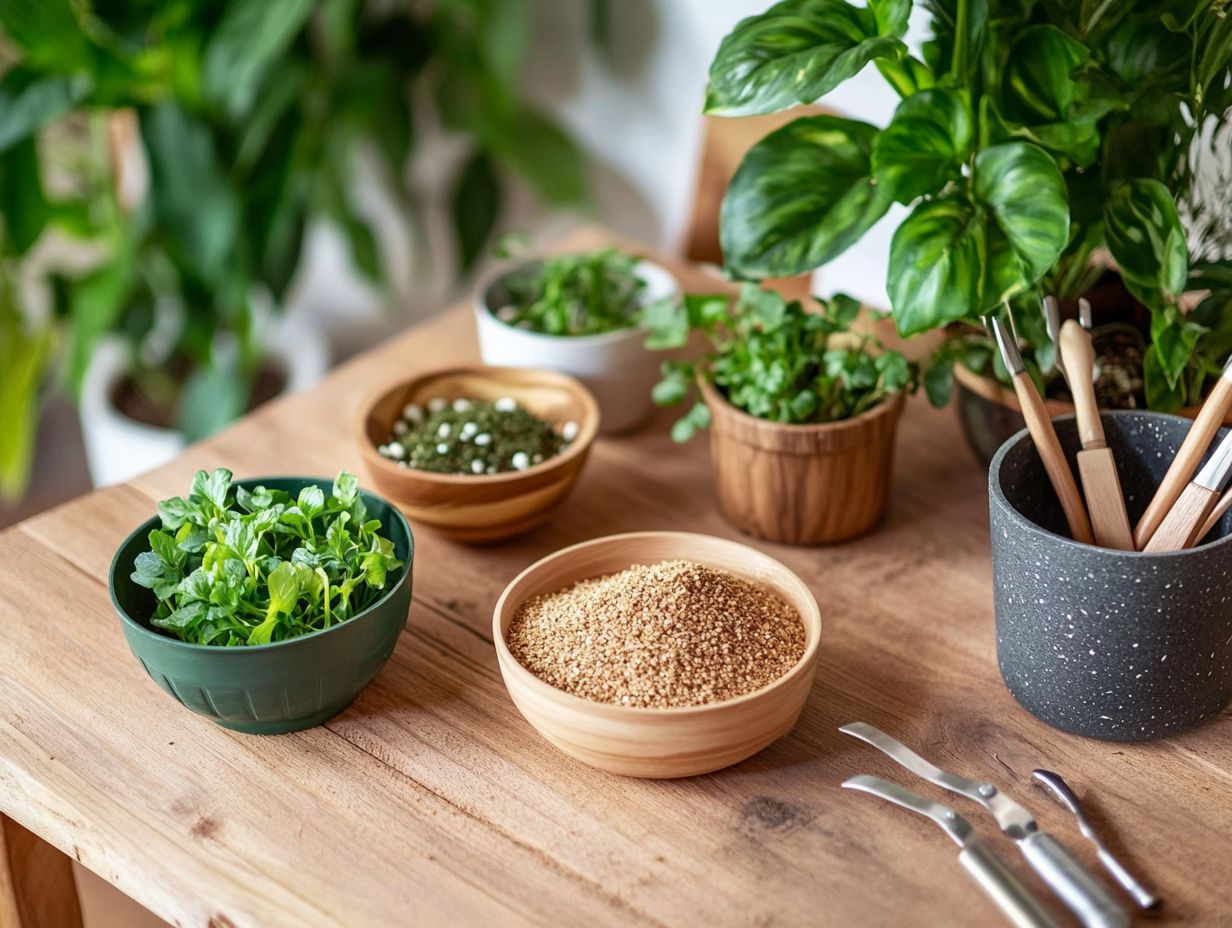
An acid-loving plant mix is meticulously crafted to create a soil environment with more acidic soil, making it the perfect choice for plants like blueberries and azaleas that thrive in acidic conditions, ensuring they receive the necessary important nutrients.
By integrating high-quality peat moss and composted manure into your gardening routine, you can effectively adjust the soil chemistry while simultaneously enriching it with important nutrients. Peat moss is particularly beneficial, as it enhances moisture retention essential for these moisture-loving plants and contributes to the desired acidity of the soil. Meanwhile, composted manure offers a balanced supply of nitrogen, phosphorus, and potassium, fostering robust growth.
This nutrient-rich blend helps your plants thrive, leading to vibrant foliage and an abundance of blooms. Together, these components create an optimal growing environment for acid-loving plants, allowing them to truly flourish in their designated spaces.
7. Recipe 5: Foliage Plant Mix
A foliage plant mix is carefully made to strike the perfect balance of nutrients and moisture retention. This ensures your leafy houseplants receive the care necessary to thrive without the risk of nutrient burn.
This balance is achieved by incorporating various components, including nutrient-rich worm castings and organic compost. These not only enrich the soil but also improve its texture.
These organic materials supply essential nutrients like nitrogen and potassium, crucial for promoting robust plant health. Proper moisture retention is key in this mix, as it fosters a stable environment for roots.
This encourages healthier foliage growth for overall plant well-being. When you provide your plants with adequate moisture and nutrients, they flourish, showcasing lush, vibrant leaves.
Their overall well-being and resilience against common plant stresses while meeting their specific repotting needs will reflect your efforts.
8. Recipe 6: Seed Starting Mix
A seed starting mix is crafted to create the perfect environment for germination and root development. It incorporates moisture retention properties that ensure your young seedlings thrive from the very beginning.
This specialized mix typically includes essential components like perlite and vermiculite. Each plays a crucial role in enhancing the overall structure of the soil.
Perlite aerates the soil, promoting necessary oxygen flow to the roots, while vermiculite excels at retaining moisture. This makes it readily available for your developing seedlings.
If you’re embarking on the journey of seed starting, choosing a lightweight soil mixture is vital. It not only makes handling easier but also encourages quicker growth in those initial stages.
Proper aeration (the process of adding air to the soil) and moisture retention lay the groundwork for healthy plants, setting you up for a successful gardening experience.
9. Recipe 7: Orchid Mix
An orchid mix is your secret weapon. It combines specialized materials like orchid bark and aeration amendments to guarantee optimal drainage and airflow around those delicate plant roots.
This thoughtfully curated mixture features components such as perlite, charcoal, and sphagnum moss. Each contributes to an ideal environment for your plants.
Perlite is your moisture superhero, enhancing retention while ensuring excess water drains away. This prevents soggy conditions that can spell disaster for your roots.
Charcoal absorbs impurities and toxins, nurturing a healthier root zone. Meanwhile, sphagnum moss retains the perfect amount of moisture, providing support without stifling the roots.
These elements cater to the specific needs of orchids, enabling them to thrive and flourish. This promotes robust growth and stunning blooms.
10. Recipe 8: African Violet Mix
The African violet mix you choose is specially crafted to strike the perfect balance of moisture retention and nutrients. This allows these exquisite houseplants to flourish with vibrant blooms.
To elevate this blend, consider incorporating organic compost alongside amendments like perlite and vermiculite. Doing so can significantly optimize moisture levels.
This combination not only promotes ideal drainage but also ensures that your plants receive essential minerals and organic matter. This creates an environment ripe for robust growth.
The right nutrient composition is essential; it boosts flowering and supports overall plant health. By consistently monitoring moisture and nutrient availability, you can revel in stunning displays of color while nurturing the vitality of your African violets.
11. Recipe 9: Hanging Basket Mix
A hanging basket mix is crafted to be lightweight yet exceptional in moisture retention. This makes it the ideal choice for your container gardening needs, especially with those cascading plants that steal the show.
This blend often includes lightweight volcanic materials. These not only lighten the load but also boost aeration, allowing the roots to breathe freely. Coco coir plays a pivotal role in this mix, thanks to its remarkable ability to retain moisture without becoming overly saturated.
Proper moisture retention is critical for hanging plants. They are frequently placed in spots where quick drying can be a real concern. By ensuring that your mix maintains ample moisture, you can foster healthier growth and more vibrant blooms, while enjoying the stunning visual impact of your hanging arrangements.
12. Recipe 10: Terrarium Mix

A terrarium mix is carefully designed to foster a mini garden that works on its own. It highlights moisture retention and a balanced soil structure that encourages the growth of small, decorative plants.
This blend features layers that provide efficient drainage and nutrient distribution. These create the perfect environment for your plants to flourish. The base layer often consists of gravel or small pebbles, which helps prevent waterlogging.
In the layers above, activated charcoal is included to filter out impurities. Various organic materials enrich the soil.
Remember, beneficial microbes are your plants’ best friends! They play a crucial role in breaking down organic matter, enhancing nutrient availability, and maintaining a vibrant community of microorganisms. This dynamic ecosystem protects plant roots from pathogens, ultimately contributing to a robust and thriving terrarium.
What Are Some Tips for Making and Using DIY Potting Mixes?
To craft and utilize DIY potting mixes effectively, follow expert gardening tips that strike the perfect balance between moisture retention and drainage tailored to your plants’ needs.
Begin by testing the soil pH. This crucial step helps you determine whether your mix skews acidic or alkaline, allowing for necessary adjustments. A simple pH test kit can truly be a game changer in creating the ideal environment for your specific plants.
Once you’ve established the pH levels, pay attention to moisture control by fine-tuning your ingredients. Adding materials like perlite can significantly enhance drainage, while sponge-like peat moss will help retain the essential moisture your plants crave.
Choosing the right compost ingredients, such as aged manure or leaf mold, not only enriches the nutrient profile but also promotes beneficial microbial activity. By implementing these practices, you will boost your plants’ health and ensure that your gardening efforts yield satisfying results.
What Are Some Common Mistakes to Avoid When Making Potting Mixes?
When you’re crafting potting mixes, watch out for common mistakes that can lead to issues like poor moisture retention, an inadequate nutrient profile, and even root rot if not managed properly.
One frequent misstep is the overuse of peat moss. This can tip the scales toward overly acidic conditions, jeopardizing your plants’ health. You may also underestimate the critical role of adequate drainage in your mixes. Without proper drainage solutions like perlite or vermiculite, your plants could end up battling excess water retention, risking root damage. To learn more about improving your soil for optimal growth, check out this guide on how to amend soil for indoor plant growth.
To sidestep these pitfalls, it’s essential to maintain a balanced ratio of ingredients. Incorporating compost or coconut coir enhances nutrient delivery and ensures optimal moisture levels. Make it a habit to regularly check the mixture for consistency, adjusting as needed to create a thriving environment for your plants.
Get started today and watch your plants thrive!
How Can You Determine the Right Potting Mix for Your Plants?
Choosing the right potting mix is essential for your plants’ health. Understand their specific needs, including soil quality, moisture retention, and nutrient requirements.
Indoor plants thrive in lighter, well-draining mixes that prevent root rot. In contrast, outdoor plants prefer denser mixtures that provide stability and retain moisture.
Read plant labels carefully. They provide vital care instructions, including ideal soil composition and watering frequency.
Adjusting your potting soil based on this information ensures your plants receive the right nutrients and can grow effectively.
Making these thoughtful adjustments can lead to healthier, more vibrant plants in your collection.
What Are Some Alternatives to DIY Potting Mixes?
If DIY mixes aren t for you, consider commercial alternatives. They provide a quick and effective solution for your gardening projects.
Commercial mixes are often pre-blended, offering consistent texture and nutrient profiles. Just be cautious they may contain synthetic additives or non-organic ingredients that compromise sustainability.
Using organic fertilizers alongside these mixes can help promote healthier soil ecosystems.
On the other hand, crafting your own potting soil lets you customize it for your plants. This option requires some time and effort but can be rewarding.
Both methods have their benefits. Understanding your choices can greatly influence plant health and your environmental footprint.
What Are the Benefits of Using Organic Materials in Potting Mixes?
Using organic materials significantly improves soil quality. These components, like worm castings and compost, enrich the soil and support sustainable gardening.
Organic materials nurture a thriving ecosystem, promoting plant health. They introduce diverse microorganisms that help plants access essential nutrients more efficiently.
The slow release of nutrients from these natural ingredients minimizes the need for synthetic fertilizers. This sustainable approach enhances soil structure, water retention, and aeration.
The result? Robust plant growth and greater resilience against pests and diseases, making your gardening efforts more rewarding.
How Can You Store and Reuse Excess Potting Mix?
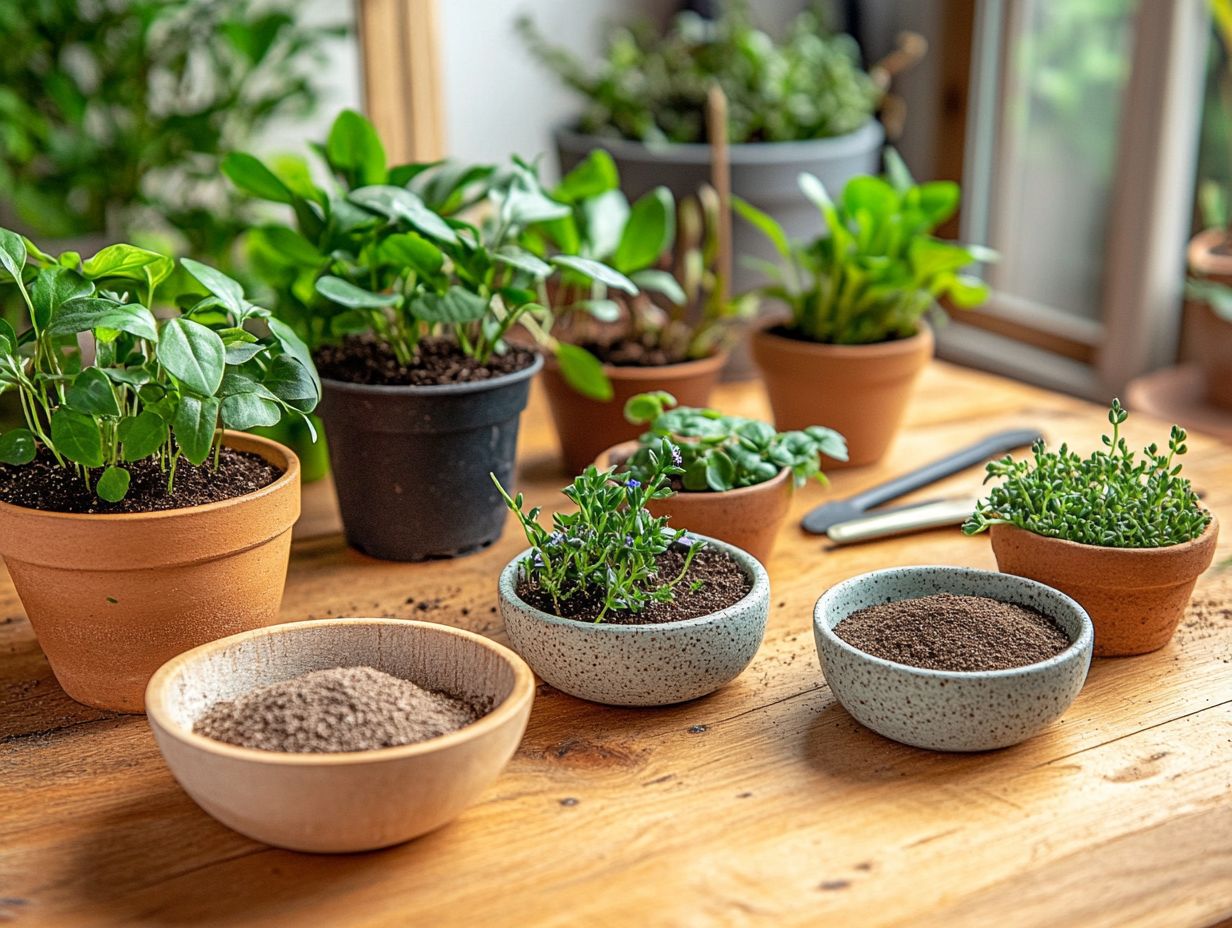
Storing and reusing excess potting mix conserves resources and enhances moisture retention. This practice supports effective plant care.
Use airtight containers to protect the mix from air exposure and humidity fluctuations. This prevents degradation and maintains the mix’s structure.
Check moisture levels regularly. Overly damp soil can invite mold or pests, threatening your plants.
Before reusing the mix, inspect it for pest infestations. This simple step keeps your plants healthy and safe.
Embrace these techniques to cultivate thriving plants while championing eco-friendliness.
Frequently Asked Questions
What is a DIY potting mix recipe for indoor plants?
A DIY potting mix recipe for indoor plants combines various materials. These recipes can be customized based on the specific needs of your plants, promoting healthy growth and drainage.
What are the benefits of making your own potting mix for indoor plants using lightweight volcanic materials?
Making your own potting mix offers many benefits. It allows for customization based on your plants’ needs and often includes more natural ingredients, which are great for growth.
What are some common ingredients used in DIY potting mix recipes for indoor plants?
Common ingredients in DIY potting mixes include peat moss, perlite, vermiculite, compost, and different types of potting soil. You might also consider coco coir, sand, or bark chips.
How do I create a DIY potting mix for my specific indoor plant?
To create a DIY potting mix, start by researching your plant’s specific needs, like pH level and drainage. Choose ingredients that will best support its growth.
Can I reuse potting mix from old plants in a new DIY mix?
Yes, you can reuse potting mix from old plants. Just remember that it may lack some nutrients, so you might need to add fresh ingredients. Remove any dead or diseased matter before reusing.
Are there any specific steps I should follow when making a DIY potting mix for indoor plants to ensure proper soil structure and moisture retention/aeration?
Follow these steps for a successful DIY potting mix: mix all ingredients thoroughly, sterilize recycled materials, and test the pH level. Regularly monitor your plants and adjust the mix to support healthy growth.

